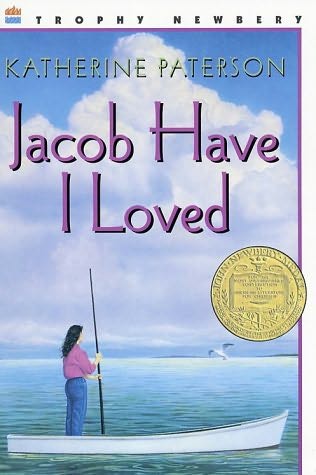Children of the 90s is looking for guest bloggers and collaborators! Have a burning desire to write about nostalgia? Have you seen a doctor to make sure it won’t just clear up on its own? Then you might be interested in writing for Children of the 90s! Contact us at childrenofthe90s@gmail.com to apply! In so many areas in our lives, we look to the experts to tell us what is worth our attention and appreciation. The Oscars tell us which movies to see, the Emmys tell us which TV shows to watch, and the New York Times Bestseller List tells us which books to page through. Though far less prestigious, children’s and young adult books have their very own award system that shaped many of our young adult library experiences: the Newberry Medal.Our school librarian always read to us from Newberry Award-winning children’s books, and with good reason. The Newberry Medal is awarded for excellence in children’s literature, showcasing the best young adult fiction of the year. After reviewing the list, I could remember almost all of the winners in fairly accurate detail. Even less voracious readers devoured these books with gusto, relishing the distinctly pre-teen themes and relatable writing. Don’t blame me if this list makes you want to visit the young adult section at your local library--I’m heavily considering checking out Jacob Have I Loved and Number the Stars. Because most children of the 90s came of age over a span of a decade or so, I had to split this post into 80s and early 90s selections, with mid-90s selections sequestered to a second post. Now that we have all of the logistical details hammered out, let’s get down to brass tacks (don’t you think that sentence had a lot of hardware references for a post about books? Just saying.)1981 Medal Winner: Jacob Have I Loved by Katherine Paterson

The sequel to Voigt’s 1981 young adult novel Homecoming, Dicey’s song follows Dicey Tillerman and her siblings as they begin a new life with their Gram on her farm in rural Maryland. Their mother, now in a psychiatric hospital,abandoned her children by leaving them in a parking lot. Gram is a very closed and private person, and Dicey and her siblings have trouble adjusting to their new life. Spoiler alert: their mom dies. Sorry if I ruined the ending, but if you haven’t read this by now, your window of opportunity to do so has probably closed. If not, hey, you probably would have seen it coming anyway. These young adult fiction books aren’t known for their subtlety.1984 Medal Winner: Dear Mr. Henshaw by Beverly Cleary
Ah, Beverly Cleary. You always knew how to charm your child readers with your realistic young characters. In Dear Mr. Henshaw, we meet Leigh Botts, a second grader who writes to author Mr. Henshaw as a part of a class assignment. Aside from not knowing that “Leigh” is actually a girl’s name, our main character also deals with life issues like his parents’ divorce and moving to a new town. The book satisfied our natural curiosity (read: nosiness) by allowing us a peek at someone else’s private letters and diary entries, while covertly teaching us valuable life lessons about accepting things for what they are.1986 Medal Winner: Sarah, Plain and Tall by Patricia MacLachlan
We were all crazy for historical fiction in the 80s and 90s, wishing for nothing more than a book to transport us to a different time and place. In the case of Sarah, Plain and Tall, we ventured to the old West to follow the daily lives of the Witting family. Like any good children’s book, the story centers on the wholesome and moral world of--you guessed it--mail-order brides. Yes, that’s right, the ol’ hopeless romantic Jacob Witting writes away for a new wife based on an ad in the back of the paper. Somehow MacLachlan manages to weave it all into a heartwarming tale, which is nothing short of a testament to her quiet and simple storytelling style. 1987 Medal Winner: The Whipping Boy by Sid Fleischman
Fleischman’s title character is Jemmy, the young boy forced to bear the brutal whipping consequences for a royal heir’s unprincely actions. Every time the prince acts up, Jemmy must endure the brunt of the punishing whippings. Pretty awesome job, right? Luckily The Whipping Boy keeps it fun and madcap, sending Jemmy and Prince Brat (as he’s called in private) on a whirlwind adventure escape filled with colorful characters like Cutwater and Hold-Your-Nose Billy. For a somewhat dark premise, the book’s tone is light, tying it all together neatly with a solid moral message about treating people with equal respect.1990 Medal Winner: Number the Stars by Lois Lowry
Lois Lowry knows how to weave a compelling story, creating believable young characters child readers can relate to. In Number the Stars, Lowry explores the story of friends Annemarie and Ellen growing up in Denmark during World War II. As the Nazi presence becomes a part of daily life in Denmark, Annemarie is worried about what will happen to her Jewish friend, Ellen. While the theme is certainly heavy for a children’s book, Lowry artfully shows how the Nazi occupation affected young people while depicting the good-heartedness of families who chose to help their neighbors.






0 comments:
Post a Comment